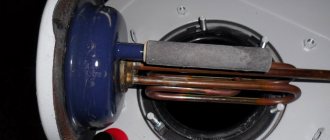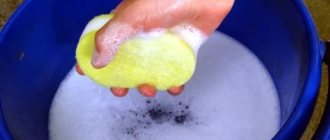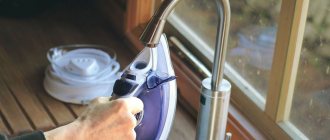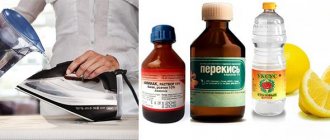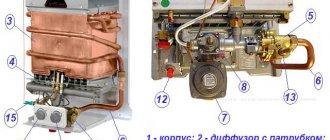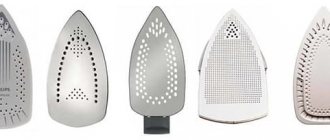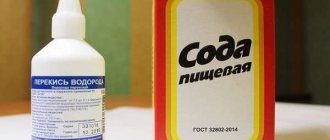Automatic water heaters are susceptible to the formation of scale, limescale and other contaminants. This disrupts the operation of the device and raises a reasonable question for many: how to clean the boiler? You can cope with the task at home yourself, having previously read the instructions for the heating device, the nuances of draining water and the disassembly rules.
The storage water heater requires periodic preventive cleaning, as it is susceptible to various contaminants that disrupt its operation and lead to increased energy consumption
The useful tips presented in the article will help you perform quick and effective cleaning with minimal effort and time.
What is meant by boiler cleaning procedure?
To figure out how to clean boilers without calling a technician, you need to learn how to disassemble them. All electric water heaters are designed almost the same. The methods of attaching the heating element and the electronic unit may differ slightly. The second important point is that you need to know how and with what to clean the water heating device. There are two methods:
- Dry cleaning. The boiler does not have to be disassembled. It is enough to use a special factory-made descaling liquid. Among the traditional methods, a concentrated solution of citric acid is suitable.
- Mechanical cleaning. A complex method that requires disassembling the water heater. First of all, heating elements in storage boilers become coated with plaque. First you need to clean the heating element and then rinse the tank.
The mechanical method is justified when chemical cleaning of the water heater does not bring positive results.
Before you begin cleaning the electric boiler, the device is disconnected from the water supply and electrical network and the water is drained from the tank.
A few important points
The design of most electric boilers is such that the pipes are inserted from the bottom. The heating element is also located there. Removing the device from the wall for repairs or preventive cleaning is not always convenient. Accordingly, the water heater must be placed so that it is accessible. We must not forget that the water will have to be drained. It is advisable to do this in a sink or bathtub. Otherwise, you will have to prepare dozens of rags each time to eliminate puddles.
Another significant point concerns the heating elements. If you clean the heating element on the water heater in a timely manner, it will fail very quickly. The boiler will still have to be disassembled to replace components. Neglecting preventive maintenance is tantamount to additional costs for servicing the device.
The most incredible way to get my hair back!
This is just a DISASTER ! And after all, my hair did not start falling out in one day, but systematically - day after day I watched how the hair left my head: while combing, washing, even while sleeping. (read more…)
Many water heater owners don't think about how to clean their water heater. They believe that the built-in magnesium anode will prevent the formation of deposits on the inner surface of the housing and heating element. But this is far from true. In many regions, the water is so hard that regular cleaning is essential. The first time it is carried out 1.5–2 years after purchase. Then the intervals are reduced to 9–12 months. It is advisable to follow the manufacturer's recommendations.
On various forums you can come across the question: “How to clean the water heater filter?” The short answer is “no way”. Boilers are not equipped with such equipment. If you want to reduce the amount of scale deposited on the heating element and walls, you can install a filter directly in front of the cold water tap. It will trap sand particles, excess iron and salts.
How to know when to clean your water heater
The frequency of cleaning the water heater depends on the quality of the water. If the indicators are normal, then manufacturers recommend carrying out a planned procedure every three years. If the water is very hard, the boiler must be cleaned annually. They receive complete information about the quality of water in laboratory conditions by submitting it for analysis. If this is not possible, you will have to navigate the alarm signals:
- heating time increased;
- the water temperature does not correspond to the readings on the boiler thermometer;
- electricity consumption has increased significantly;
- the water tank overheats;
- The water heater switches on and off frequently.
Alarm signals are associated with large accumulations of solid deposits. Most often, mechanical cleaning is indispensable. Yellowness and an unpleasant odor appearing in the water indicate mild contamination, which can be removed by flushing the tank without removing the boiler from the wall.
Basically, scale forms on the heating element. This is what a clean heater looks like and a dirty one.
Another launched option
Bottom line
As we can see from the above, it is quite easy to get rid of scale inside the water heater yourself. Simple dismantling using a minimum number of tools, as well as cheap professional cleaning products, are available to everyone. You can call a friend or neighbor to do all the work.
The boiler itself weighs a little without liquid, but with wet hands it is quite difficult to hold the volumetric structure. Any damage to the bulb, even minor, will later turn into a leak. The basic rule that must be strictly followed is not to use screwdrivers, knives or micron sandpaper to remove scale.
Moreover, regular cleaning will get rid of the unpleasant odor from the tap, which intensifies as the water temperature increases. This manifestation is associated not only with the accumulation of dirt inside the sealed space, but also with the development of bacteria that can harm adults and children.
Causes of scale
In order to clean the water heater less frequently, owners install filters on the incoming water pipe. They trap coarse particles and dirt, but the water hardness remains the same. Modern cleaning systems are not affordable for everyone and they also do not guarantee 100% results. Due to increased water hardness, lime deposits – scale – accumulate in the water heater. A hard crust first covers the heating element, and then the inner surface of the storage tank.
With a scale thickness of 1 mm, energy consumption increases by 10%. If the heating element is overgrown with a hard coating 10 mm thick, then the consumption will increase to 70%.
Correct operation
To extend the life of your equipment, use our recommendations:
- Install reagent filters. Their cartridges contain water softening agents. Timely replacement of cartridges will help improve water quality. Filters with sodium resin are considered more effective.
They produce reagent-free filters. They emit a strong magnetic field, salt particles change shape and do not settle on the surface. Such products are more expensive.
- When purchasing, pay attention to the material of the heating element. Galvanized and ferrous metals rust most quickly.
- Magnetic thermostats work best.
Correct operation prevents problems with the heater. Therefore, follow the manufacturer's recommendations.
Cleaning a water heating device using a chemical method
Every owner should know the simplest ways to descale a water heater without disassembling it. Timely prevention will prevent the deposition of thick stone layers, and the boiler will not have to be disassembled.
Cleaning with solution without disassembly
The method for descaling a boiler is based on using a cleaning solution made from water with the addition of vinegar or citric acid. When limescale enters an acidic environment, a chemical process begins that destroys the scale. Store-bought cleaning products work the same way. The only question remains is how to pour the solution inside the boiler. And it's easy to do:
- turn off the cold water supply tap, and then disconnect the water pipe from the inlet pipe on the boiler;
- open the hot water tap on the mixer and drain approximately 2/3 of the liquid from the tank;
- The hot water tap is closed, and a hose is screwed onto the inlet pipe of the boiler;
- A watering can is inserted into the second end of the hose and, lifting it above the boiler, the cleaning solution is poured.
With a cleaning solution, the boiler stays for 5–6 hours. After time has passed, the dirty liquid is drained by opening the hot water tap on the mixer. The tank is washed with cold water from the water supply.
In order not to drive dirty liquid through the pipeline to the mixer, an additional drain valve is installed on the boiler pipe.
Cleaning with solution with disassembly
When neglected, layers of scale fall off the internal surfaces of the water heater. It will not be possible to remove them chemically without disassembling them. The boiler must be removed, unscrew the flange with the heating element from below and remove solid layers from the tank with your hands. After manual cleaning, a cleaning solution is poured into the tank. The heating element is put in its place. After 5–6 hours, the dirty liquid is drained, the boiler is washed and hung on the wall.
Use of auxiliary chemicals or folk remedies
Disassembling/assembling the device can be difficult and time-consuming, and mechanical cleaning may be ineffective. In this case, the tank can be cleaned without disassembling using cleaning products. Household chemicals include special products:
- Master Boiler;
- Nast;
- Cillit;
- Topper;
- Cinderella Antiscale.
All of the listed cleaners have the same properties and are used in a similar way:
- the boiler is emptied by a third;
- the solution is poured through the hose attached to the fitting;
- The mixture is kept inside for several hours.
After this, the tank is rinsed several times, draining and filling with water. During the last rinse, the device must be turned on, warmed up and the water drained. Only after this can the boiler be used for its intended purpose. Cleaners prepared independently using improvised means are also used:
- citric acid;
- vinegar;
- soda;
For a home cleaner, you will need about half a kilo of one of the listed products, which must be dissolved in two liters of water.
Important! When using soda-based cleaners, it is important to ensure that the powder is completely dissolved. Otherwise, invisible microcracks may appear that can affect calcification.
Mechanical cleaning of the device’s water heater with disassembly
If the boiler is heavily soiled, the only way to descale the boiler is mechanically. The water heater will have to be disassembled. This is done carefully so as not to damage the electronic unit and heating element, otherwise there is a risk of a short circuit. The process consists of two stages: cleaning the heating element and the storage tank of the water heater.
To descale the device mechanically, you will need to dismantle the water heater. After disconnecting the device from the network, proceed to disassembly:
- first close the cold water supply tap, then disconnect the pipeline from the boiler fitting;
- the storage tank is emptied through a mixer or an additional drain valve;
- disconnect the hot water pipeline from the boiler fitting;
- remove the lower decorative cap by unscrewing all the screws;
- if the handle of the mechanical thermostat protrudes, it is also removed;
- use a screwdriver to unscrew the contacts that clamp the power wire;
- the boiler is removed from the wall and placed upside down in the bathtub;
- the flange with the heating element and the thermostat are unscrewed, removed from the tank, and then mechanical cleaning begins.
The procedure for dismantling boilers from all companies is almost the same. Some nuances of attaching the flange and decorative cap may differ.
Cleaning products and tools
To descale your water heater you will need the following tools:
- adjustable wrench and set of wrenches;
- straight and curved screwdriver;
- pliers;
- knife, sandpaper.
Cleaning products for descaling are bought in the store. A solution is prepared from citric acid by dissolving 500 g of crystals in 2 liters of water. Instead of citric acid, you can dilute 40 ml of vinegar in the same amount of water.
Store-bought cleaning products can destroy the rubber seals of the boiler. Before using the solution, you must carefully study the instructions on the package.
Cleaning the heating element
When disassembling for the first time, a person does not know how to clean the heating element of a water heater so as not to damage it. You will need to be careful in your work. You need to know that the heating element of a water heater comes in wet and dry types and they are cleaned in two ways.
Wet heating element
Mechanically descaling the heater can be done by scraping it with a knife. Thick growths are crushed with pliers, and the remains are rubbed with sandpaper. You cannot overdo it so as not to damage the copper shell of the heating element.
If you feel unsure, it is better to place the heater in a cut-off plastic bottle filled with a solution of water and citric acid. Approximately 5–6 hours after the scale has completely dissolved, the heating element is removed and washed with clean water.
Dry heating element
Dry heating elements are handled with care. Do not scrape, break or rub hard accumulations with sandpaper. Dry heating elements can only be cleaned chemically by immersing them in a solution of citric acid or a factory-made cleaning agent.
When cleaning the heater, inspect the magnesium anode. If it has worn out and become thin, then replace it.
Cleaning the storage tank
To remove dirt or scale from the walls of the water heater storage tank, do not resort to rough action. Sandpaper or scrapers will damage the protective coating. The mucus is simply washed out with a soft sponge, using water under pressure from a shower head.
If there is a thick layer of scale on the walls of the water heater tank, use a factory-made cleaning solution. Citric acid or vinegar diluted with water will do. The water heater tank is filled with solution and left overnight. In the morning, the liquid with the fallen plaque is drained. The tank is washed with clean water.
Reassembling the boiler after cleaning
After cleaning and disassembly is completed, the water heater is reassembled. All actions are performed in reverse order:
- The thermostat with heating element is put in place and the flange is screwed on;
- the boiler is hung on the wall;
- cold water and hot water pipelines are connected to the nozzles;
- the storage tank is filled with water and tested under pressure to ensure there are no leaks;
- if the test is successful, connect the electrical cable, put the decorative cap in place, and then try to heat the water.
During reassembly of the water heater, it is important to carefully inspect the gaskets. They are well cleaned from dirt, but it is better to buy new ones. To prevent leakage, the gaskets are lubricated with sealant.
Step by step instructions
Draining water from the boiler
The first thing to do is drain the water heater. To do this, you need to use the safety valve on the cold water supply, if it has a manual release handle, or turn off the hot water valve, then unscrew the reinforced hose from the cold water supply (if soldered, an American adapter) and open the second valve.
A boiler with a volume of 80 liters is emptied through a safety valve within 3 hours. In all other cases, the water flow is regulated manually using a previously preinstalled valve.
Removing the protective cover and disconnecting the temperature sensor supply
To do this you will need a shaped screwdriver. After unscrewing all the screws from the lid, the main mount to the seat of the heating element will open and access to the inside of the tank will open. As soon as the fastening is dismantled, overcoming the force of the sealing rubber, the heating element itself is removed, on the body of which an additional magnesium anode is installed.
Removing the tank
After all the above steps, the tank is removed from the wall. This is necessary for more thorough independent maintenance and high-quality cleaning under running water of accumulated dirt and salt deposits.
As soon as the tank is on the ground, a bucket of water is poured into it, after which the entire container is washed with an ordinary rag, and so on several times. After the surface deposits have been removed, you can begin to treat the scale-affected surfaces using one of the mentioned means. It is enough to follow the instructions and also avoid products that contain phosphates.
Cleaning the heating element from scale
The largest amount of scale deposits always concentrates on the walls of the heating element, simultaneously destroying the anode. After removing scale from this functional unit mechanically, the remains of the magnesium anode are removed to install a new one (replacement is mandatory).
As for the heating element itself, to fully clean it you will need to select any container, fill it with a previously used descaling agent, but at the same time exceeding the concentration by 3 or more times. The heating element is lowered into the prepared solution for the next 3-4 hours.
If you can’t wait 3 hours, you can heat the liquid solution or even bring it to a boil. An old electric kettle will also work for this. The fumes are extremely toxic, so you need to protect your respiratory system or leave the room altogether.
Such simple manipulations will help you completely get rid of scale in the shortest possible time, while returning the boiler to its previous efficiency and energy savings.
Caring for water heaters from different manufacturers
All water heaters are designed the same, however, manufacturers sometimes make adjustments to the design. Let's look at the features of disassembling boilers of three popular brands:
- Ariston water heaters have a different flange mounting. To remove it, push it inside the housing. In the tank, the flange is turned clockwise and pulled out. To clean the Ariston water heater, it is not necessary to remove it from the wall. All main components are located below and can be easily removed.
- To clean the Baxi boiler from scale, first remove the thermostat. Do not completely unscrew the nuts on the flange to drain the remaining water. There will be a maximum of 2–3 liters of liquid at the bottom of the tank. When the water has drained, unscrew all the nuts, and then carefully remove the flange with the heating element.
- Thermex water heater is disassembled in the same way as an Ariston boiler. The device differs in the maintenance of the magnesium anode. The protection is changed once a year.
Other brands of boilers do not differ in complex design features.

